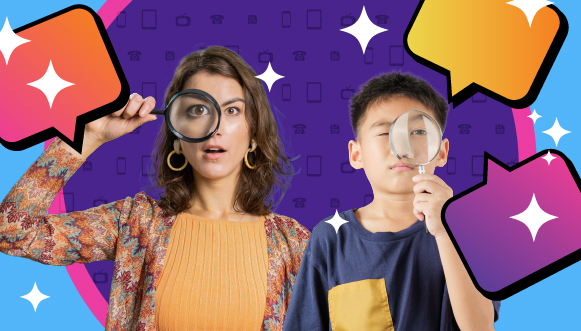
Artificial intelligence (AI) is becoming a bigger topic in technology. Every day, new tools and advancements pop up. But as AI gets more advanced, it may bring new threats. Let’s look at how to spot AI -generated content and the risks it can pose to individuals and businesses.
What is generative AI ?
Generative AI is a type of AI that generates new content by learning from data it was given. While traditional AI uses patterns in data to analyze existing content, generative AI creates new content like text, images, videos, audio and software. Generative AI can be hard to tell apart from content made by humans. Some websites and social media platforms now offer an AI assistant to help you post content with AI enhancements.
This technology can be used for good things, like asking AI to write a silly poem to cheer up a friend. But it can also be used by cyber criminals to create malicious content meant to trick you.
What are the risks of generative AI ?
Generative AI can make highly realistic fake content. This makes it hard to tell what is real and what is not. The content it creates can be very inconsistent and biased, depending on the input it receives. These AI tools often present their content as true facts, even if it’s not. This can lead many people and businesses to unknowingly spread disinformation.
Cyber criminals also use generative AI to trick and manipulate people online. They create sophisticated phishing messages or impersonate individuals to get private information. It’s important to be aware of the risks of generative AI , how quickly it’s growing and how easy it is for anyone to use.
How can I tell if something is AI ?
AI can generate images that look real at first glance. But if you look closely, you can spot some key signs of AI generation.
How to spot AI -generated images:
- Watch out for misplaced content, like missing objects or body parts (especially hands). This could also look like incorrect shadows and lighting, or text that doesn’t make sense.
- Be suspicious of smooth features. AI often creates unrealistic textures for skin or fabric. For example, look for humans who appear glossy or have unusually smooth skin or clothing.
- Some AI apps add a watermark, like a small logo to the images they generate. Look out for icons or text on an image indicating it was made with AI .
How to spot AI -generated videos:
- AI doesn’t always create natural movements when making humans or other creatures move. Be on the lookout for unnatural body language and people who don’t blink.
- Consistent lighting isn’t always common in AI -generated videos. Watch out for shadows, blurs or light flickers where there shouldn’t be.
- Irregular audio, especially in voices, can be a sign of AI generation. Look out for unnatural and flat tones during speech, unexpected background noises or choppy sentences.
How to spot AI -generated text:
- Unlike human writing, AI -generated content is often uniform and factual. Look for text that doesn’t include personal opinions, like a dry “robotic” or matter of fact tone and emotionless format writing.
- Some AI tools are trained on old data, giving false information about current events. Do a fact check and look for information that’s outdated.
- AI can be repetitive. Look out for words or phrases repeated over and over again.
Conclusion
As AI technology continues to evolve, so do its associated threats. By staying informed and adopting preventative measures, you can protect yourself and your business from the risks of AI generated content. Let’s work together to navigate this new landscape and ensure all Canadians can Get Cyber Safe!